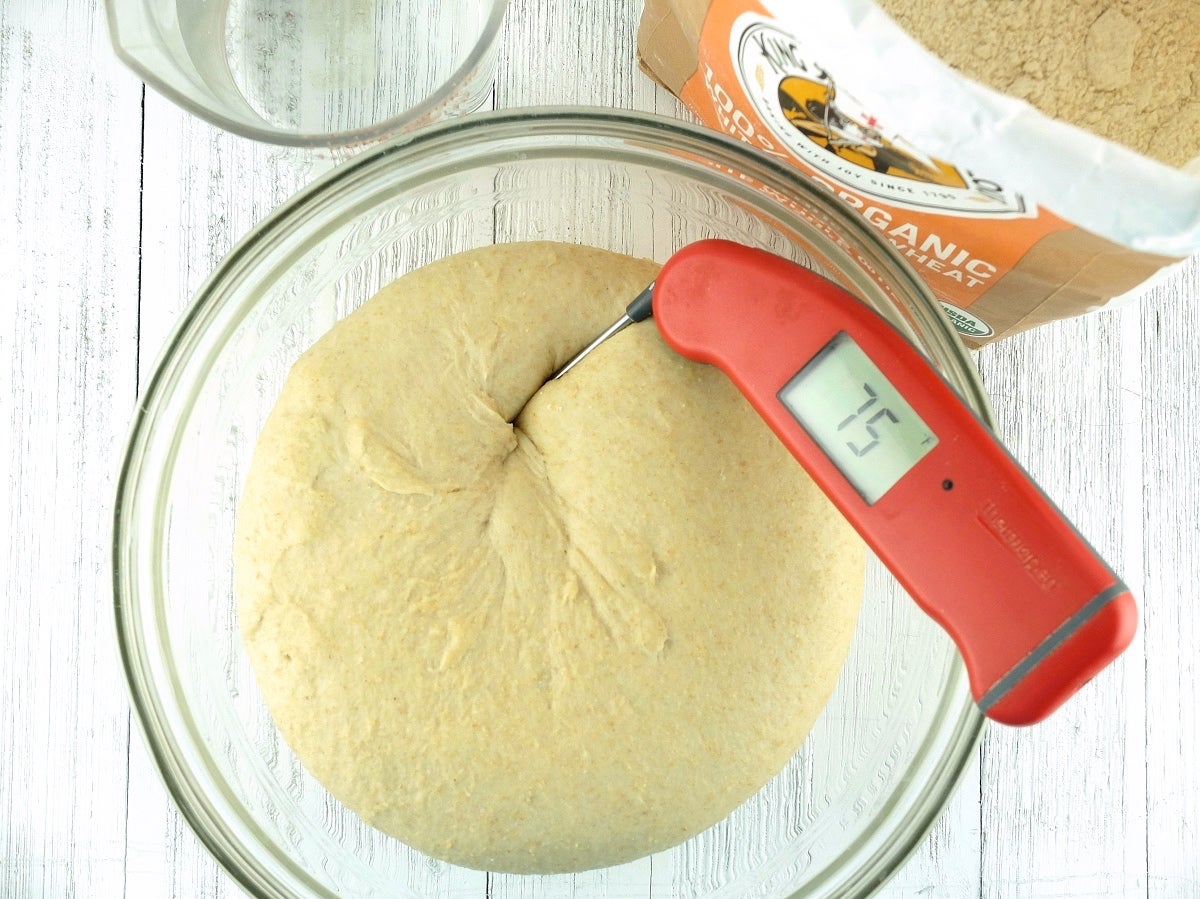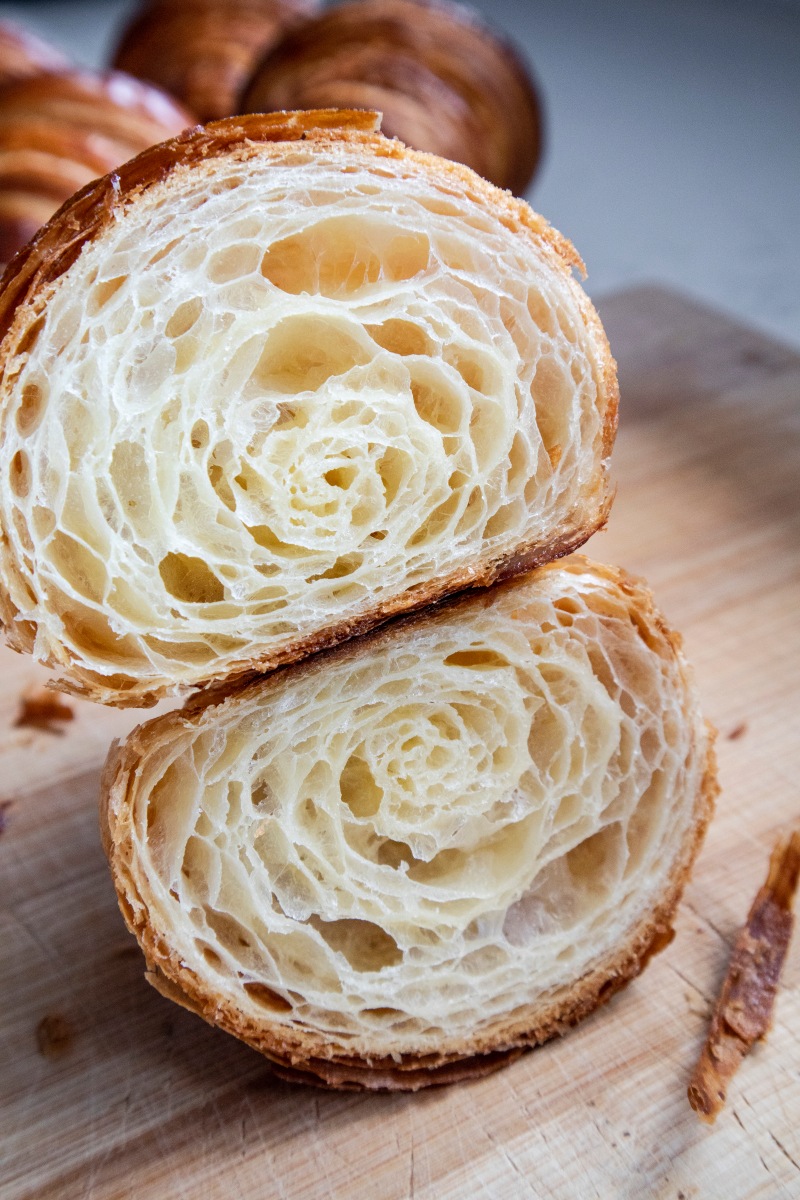Thank you, that's a great recommendation. My mother-in-law got me the Elizabeth David book for Christmas but it's not an easy read! I don't mind it not being a recipe book - I'd rather understand the science so I can judge recipes myself. I've got the hang of bakers ratios and that makes a lot of sense to me. I've already learnt a lot from the Richard Bertinet book, 'Crumb".
I made hot cross buns yesterday from an internet recipe and I should have known better as I tend to avoid internet recipes as I think there's more of a guarantee that recipes in published books have been tested properly. But it called for 700g dried fruit to 800g flour and I just thought 'that's not right' but didn't have the confidence in the science to stick to my convictions. I only put 600g in but it was still FAR too much, plus there were various other things about the recipe that weren't right. But I don't feel as despondent about them because, whilst I'm sure there were things I could have done better (though I did tangzhong and it seems to have worked beautifully), I know that most of what could be improved was just down to the recipe. If I have a better understanding of the science, that hopefully won't happen. Maybe I'll leave pastry and focus on bread for a bit. It makes sense as my little girl is allergic to dairy and soya and it's very hard to buy bread over here that hasn't got soya in.
Thanks again so much for your advice.
View attachment 3526
View attachment 3527
I think your hot cross-buns have a really nice crumb. I really love tangzhong method for certain types of rolls and buns. It really creates a light airy texture that is perfect for sweet rolls. I don’t use it for bread because my concept of bread is crusty, chewy and more hearty.
Your instincts to be wary of internet recipes is good. A lot of bakers don’t realize the variables that come into play when you change product brands. Who wrote the recipe and where is a major factor.
For instance in the UK the domestic wheat is naturally very low in protein about 9%. You cannot bake bread milled with the domestic wheat. But the domestic wheat in England makes a very lovely cake because it is so low in protein. The low protein at 9% is comparable to pastry flour in the US and Canada.
The wheat that is cultivated in England for bread is actually non-native varieties that are imported, mainly from Canada and Australia. The wheat from these two countries is naturally very high in protein.
In Canada all purpose flour has a protein content at about 13%. That is equivalent to strong bread flour in the UK. Canadian flour makes great bread, but does not make great cake because the protein content is so high.
The US has two types of of all purpose flour: bleached and unbleached. Protein content varies between 10% - 11.7%. A lot of American bakers who post online use bleached flour. Bleached flour absorbs moisture very differently from unbleached flour and rises significantly better. Bleached flour is not available in the UK and European Union.
When using a recipe from the Internet, country of origin matters because the all purpose flour the recipe developer used in Canada and the US will have a completely different absorption rate, and the rise from the plain flour in the UK. The results will not be the same.
There are also significant differences in sugar (cane vs sugar beet sugar). Sugar beet sugar is highly inferior as it will not caramelize properly in baking. And the differences in dairy products, especially the quality of butter varies by country. American butter is pure crap (flavorless and contains a lot more water than European butters).
When recipes fails it one of two reasons: 1) the recipe developer failed to provide the brand of ingredients and/or specifications of those ingredients; 2) the baker totally disregarded ingredient specifications and/or instructions.
If you understand baker’s percentages, when you will be able to understand Suas’ book. Suas’ book has a lot of formulas, it just doesn’t have recipes. It includes formulas for everything from bread, enriched doughs, viennoiserie, pastry, confectionary. It’s over 1000 pages—its a tome! It is one of two books that I consistently refer back to all the time.
===========================================================================
Just for clarification for those reading this who do not understand the difference between a recipe and formula.
A recipe is a list of pre-measured amounts of ingredients, followed by detailed instructions for using those set pre-measured amounts ingredients.
A cookbook or recipe book is a collection of such recipes. Professional bakers do not use recipes.
Professional bakers use formulas.
A formula is an established percentages of specific ingredients, the percentages of which have been calculated against the weight of the flour.
The percentages are referred to as baker’s percentages. By maintaining the exact percentages of ingredients to the flour, no matter how large or small the batch, the baker is able to maintain consistency in batches of batter/dough. This allows the baker to adjust production throughout the week to meet changes in daily demand without compromising the quality of the products.
A percentage is number expressed as a fraction of 100. In baker’s percentages, the flour is always 100%. All other ingredients are weighed against the flour. An ingredient may be more than the 100% flour. For example, sugar is normally equal or slightly more than flour in a chocolate chip cookie. It is common for flour to be 100% and sugar to be 110%.
The Suas’ textbook is divided into major categories of bread, pastry, and confectionary. Within those sections are chapters; chapters outline a number of learning objectives. Each objective is covered in the chapter, followed by a chapter summary, key terms, and questions the reader should be able to answer. At the back of each section are professional formulas. They are for commercial production, but include a test batch, which is a single cake, batch of cookies, or a couple of loaves.
Anyone who is interested in Suas textbook needs to understand it is not a cookbook/recipebook. It is not written for the home baker as it does not have the pre-measured recipes or detailed instructions of a recipe.





